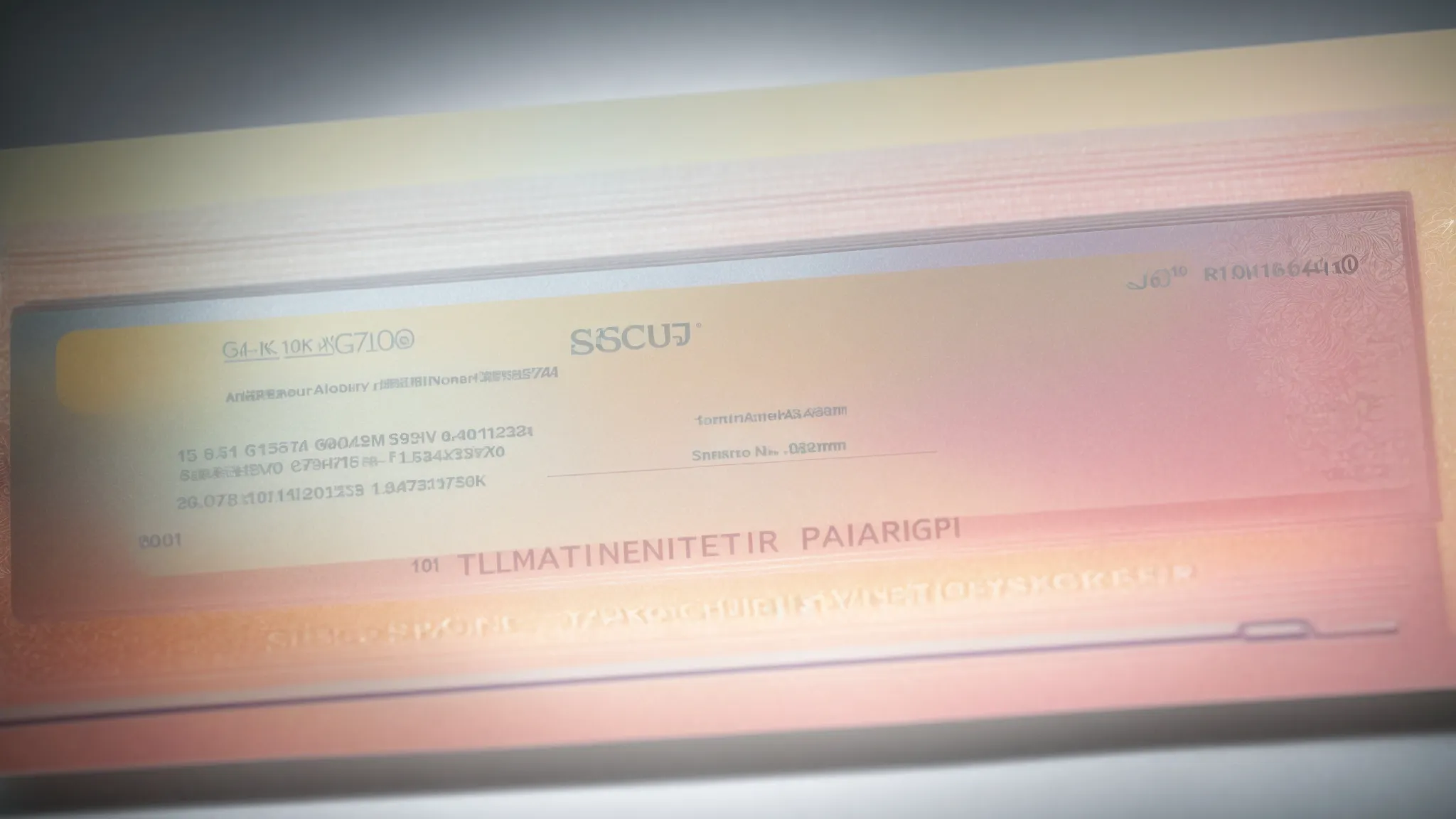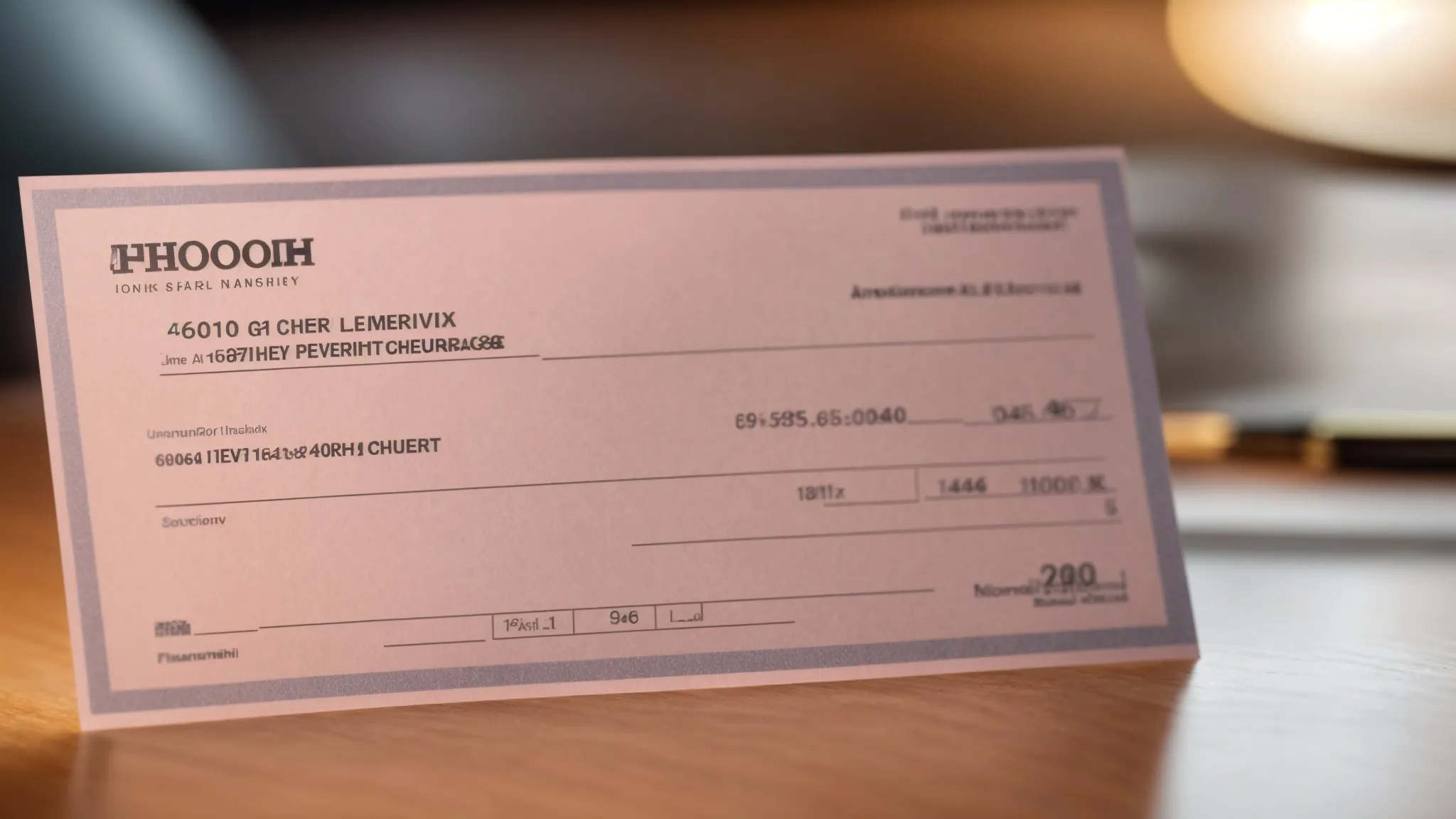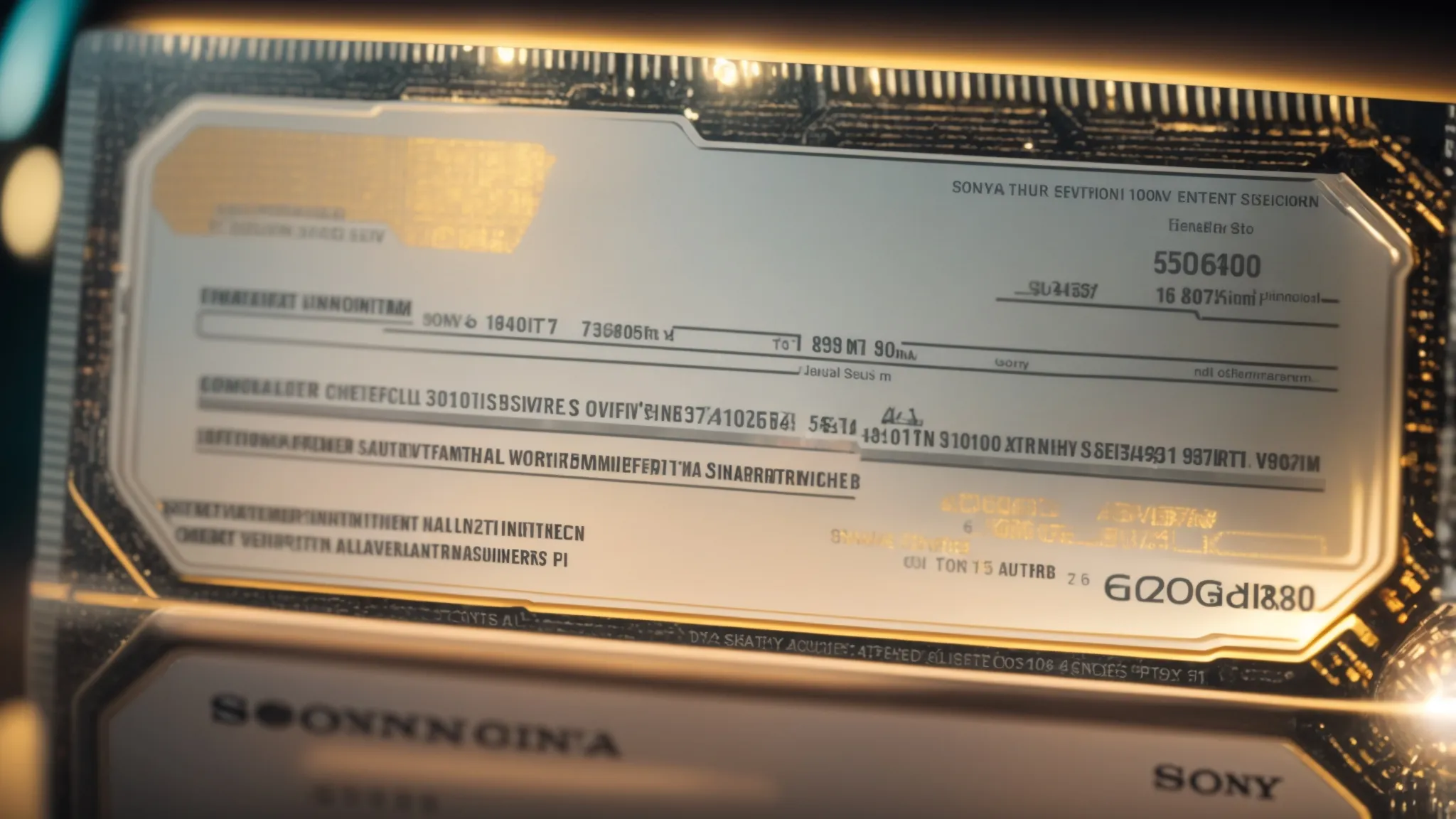Are you concerned about the security of your cheques? With increased instances of fraud, understanding cheque printing security features is crucial for any business. This article will explore advanced security aspects like magnetic ink character recognition and the importance of secure packaging for cheque books. By learning these features, you can better protect your financial transactions and enhance the integrity of your business operations. Engaging with this content will help you identify reliable cheque printing providers and equip you with strategies to manage cheque security effectively.
Understanding Cheque Printing Security Features

Secure cheque printing is vital to prevent fraud and maintain trust in financial transactions. Key features include the incorporation of foil elements, the use of the eurion constellation, and advanced techniques like microprinting for fraud prevention. Additionally, watermarks enhance security, while QR codes facilitate tracking, ensuring a comprehensive approach to safeguarding cheques against photocopiers and unauthorized reproduction.
The Importance of Secure Cheque Printing
Secure cheque printing plays a crucial role in preventing check fraud, which can pose significant risks for businesses and individuals alike. By using specialized blank check stock that incorporates advanced security print features, organizations can protect their financial assets. Encrypting sensitive information on cheques helps safeguard against unauthorized access, ensuring that important data remains confidential and reducing the likelihood of fraudulent activity.
The importance of secure cheque printing extends beyond basic security measures. Implementing effective features significantly enhances the reliability of cheques in various transactions. A robust approach not only fosters trust among clients but also streamlines the overall payment process, making it easier for businesses to manage their finances while safeguarding their interests against potential threats.
Common Cheque Printing Security Features
Common cheque printing security features include microprinting, which involves printing tiny text that is difficult to replicate accurately. This technique adds an extra layer of defense against counterfeit cheques, ensuring that secure checks remain identifiable and trustworthy. Businesses that prioritize secure check production can significantly reduce the risk of fraudulent alterations that may arise from unauthorized access or poor-quality copies.
Another important feature is the integration of specialized firmware in cheque printing machines. This firmware enhances the security protocols of printers, making it more challenging for individuals to produce counterfeit checks using ordinary equipment. Businesses that understand these security measures are better equipped to protect their financial transactions and safeguard sensitive information, ultimately maintaining trust with clients and partners.
How Watermarks Enhance Cheque Security
Watermarks play a critical role in enhancing cheque security by providing a visible sign of authenticity. In the realm of security printing, these features deter counterfeiters by incorporating unique designs that are difficult to reproduce using standard digital printing methods. For example, the use of a pantograph, which creates a subtle pattern visible only when viewed at certain angles, can make unauthorized duplication considerably challenging.
Furthermore, watermarks serve as a trusted confirmation for customers during transactions. When a cheque displays an official watermark, it signals that the document has been professionally printed using secure methods, thereby reducing the risk of fraud. Implementing watermarks in cheque production not only fortifies security but also reinforces customer confidence, making it an essential component of effective cheque printing strategies.
The Role of Microprinting in Fraud Prevention
Microprinting serves as a critical tool in combatting cheque fraud through enhanced document authentication. This technique involves printing tiny text that is nearly impossible to replicate accurately, making it an effective deterrent against counterfeit cheques. Organizations that incorporate microprinting into their cheque design can significantly reduce the risks associated with unauthorized reproduction and alterations, protecting their financial assets.
Moreover, the engraving process used in microprinting adds an extra layer of security, as counterfeiters often lack the sophisticated printing technology required to reproduce these details. By securing their cheques in this manner, companies can avoid costly outsourcing for fraud prevention measures. Understanding the role of microprinting not only empowers businesses to safeguard their transactions but also instills confidence among clients regarding the authenticity of their financial documents.
Utilizing QR Codes for Enhanced Tracking
Utilizing QR codes in cheque printing not only enhances tracking but also aids in the audit process by linking physical documents to digital records. This integration allows businesses to seamlessly connect their cheque stock to accounting software, making it easier to monitor payments and verify transactions. By encoding essential information within the QR code, companies can quickly access transaction details, reducing the potential for errors and streamlining record-keeping.
Moreover, QR codes contribute to the fight against forgery by incorporating unique identifiers that are difficult to replicate. The use of specialized ink in conjunction with the QR code can provide an additional layer of security, deterring counterfeiters and ensuring that checks maintain their integrity. For organizations focused on protecting their financial assets, integrating QR codes within their cheque printing processes presents a practical solution for maintaining accuracy and authenticity.
The basics of cheque printing security lay the groundwork for what comes next. Dive deeper, and discover the advanced features that keep your transactions safe and sound.
Advanced Security Features for Cheque Printing

Incorporating holograms on cheques enhances authenticity, while specialized inks play a vital role in preventing alterations. The use of digital signatures provides an additional layer of security, ensuring cash transactions remain protected. Moreover, implementing secure printing software can safeguard cheque production, optimizing processes for MICR printers and barcode applications. These advanced features contribute significantly to overall cheque security.
Incorporating Holograms for Authenticity
Incorporating holograms into cheque printing provides a powerful method for enhancing authenticity and combating cheque fraud. Holograms are difficult to replicate, making them an effective deterrent against counterfeiters looking to exploit vulnerabilities in the cheque design. This advanced security feature not only reassures businesses and individuals about the integrity of their financial documents but also integrates seamlessly with check printing software, adding another layer of protection to the cheque production process.
The use of holograms, combined with high-quality linen paper for cheque stock, enhances the overall appeal and security of cheques. When cheques are printed with holographic elements, it reassures accounting departments and clients alike that they are dealing with a trustworthy payment method. Additionally, these features can be highlighted on the envelope used for mailing, ensuring that recipients recognize the secure nature of the document before opening it.
Using Specialized Inks to Prevent Alteration
Utilizing specialized inks in micr check printing is a fundamental component in preventing alteration and forgery. These inks often contain unique security features, such as fluorescence and intaglio printing, which provide visual cues that are not easily replicated. This engagement with advanced technologies enables businesses to bolster the security of their cheques, ensuring that alterations can be readily identified by the naked eye or specialized equipment.
Moreover, incorporating a security thread in the printing process further enhances the integrity of the cheque. The thread can be embedded within the cheque stock, making it nearly impossible for counterfeiters to accurately reproduce. By prioritizing these innovative inks and security features, organizations not only protect their financial assets but also cultivate trust with clients who should feel confident in the authenticity of their payments.
The Benefits of Digital Signatures on Cheques
Digital signatures on cheques significantly reduce the risk of fraud by ensuring that the signature’s authenticity can easily be verified. When combined with a watermark, the digital image of the signature provides a trusted source of confirmation that the cheque has not been tampered with. This added layer of protection is especially beneficial for businesses using MICR printers, as it ensures that all printed cheques maintain high security during transactions.
Incorporating digital signatures streamlines the cheque verification process, allowing for quicker approvals and reducing the potential for fraudulent activities. By using advanced technology and secure software, businesses can effectively safeguard their transactions while improving customer trust. With a focus on security, organizations can minimize risks associated with cheque processing, ultimately enhancing their overall financial management systems.
Implementing Secure Printing Software
Implementing secure printing software is essential for organizations looking to print checks safely and efficiently. This software allows users to regulate access to cheque printing features and ensure that only authorized personnel can execute important financial transactions. By enhancing the control over printing processes and integrating security features, organizations can protect sensitive data, including the email addresses linked to financial dealings and customer accounts, ultimately reducing the risk of fraud.
Additionally, secure printing software often works seamlessly within a web browser, streamlining the process of printing checks directly from accounting systems. This integration not only simplifies the workflow but also ensures that the toner used in the printing process meets high-security standards, further safeguarding the checks. Organizations that invest in this technology can enhance their cheque printing security, affirming their commitment to protecting their financial interests and maintaining trust with clients.
Understanding advanced security features is just the beginning. Next, it’s time to look at the best ways to manage and protect those vital cheque assets.
Best Practices for Managing Cheque Security

Establishing internal controls for cheque issuance is vital for minimizing risks associated with fraud. Regular staff training on cheque security ensures that employees are well-informed about the importance of features like the void pantograph and thermochromic ink. Additionally, conducting audits of cheque printing procedures can enhance transparency and compliance with standards set by organizations such as the American National Standards Institute. These practices collectively enhance a brand‘s resilience against cheque-related threats.
Establishing Internal Controls for Cheque Issuance
Establishing internal controls for cheque issuance is essential for maintaining data security and reducing the risk of fraud. Companies should implement strict policies that limit access to cheque printing to authorized personnel only, ensuring that sensitive information linked to bank accounts is safeguarded. By using secure laser printers equipped with specialized firmware, organizations can further enhance their cheque printing processes, minimizing the potential for unauthorized duplication or alterations.
Regular training sessions for staff on cheque security practices are also crucial for reinforcing adherence to established protocols. Employees should be educated about the importance of checking the integrity of the cartridge used in laser printers and ensuring it complies with the organization’s security standards. By fostering a culture of awareness regarding cheque security, businesses can effectively shield themselves from threats while promoting trust and accountability within their financial operations.
Regular Staff Training on Cheque Security
Regular staff training on cheque security is crucial for maintaining robust financial practices within an organization. Educating employees about the various security features, such as microprinting and watermarks, enables them to recognize and prevent potential fraud. When team members are knowledgeable about cheque security, they become proactive in safeguarding sensitive information, ultimately protecting the company’s financial assets.
Moreover, consistent training sessions reinforce the importance of adhering to established protocols related to cheque issuance and distribution. By providing practical examples of common fraud attempts, organizations can equip their staff to identify suspicious activity effectively. This ongoing education not only boosts employee confidence but also cultivates a culture of accountability, ensuring that cheque security remains a top priority within the organization.
Conducting Audits of Cheque Printing Procedures
Conducting regular audits of cheque printing procedures is essential for identifying potential vulnerabilities in the security of financial documents. These audits can help ensure compliance with established protocols, making it easier to spot any discrepancies or irregularities in cheque production. For businesses, this proactive approach not only protects their financial assets but also instills confidence among clients regarding the integrity of their transactions.
In addition to compliance, audits serve as an opportunity for organizations to evaluate the effectiveness of the security features implemented in cheque printing. By analyzing the results, businesses can adapt their procedures and update technologies to address emerging threats. Strengthening these processes will ultimately enhance cheque security and reduce the risk of fraud, ensuring smoother financial operations and increased trust with stakeholders.
With the right security measures in place, the next step becomes clear. Choosing a reliable cheque printing provider can strengthen those safeguards and ensure peace of mind.
Evaluating Cheque Printing Providers

When evaluating cheque printing providers, it is essential to assess their security protocols to ensure robust protection against fraud. Understanding compliance with industry standards provides insight into their commitment to safety. Additionally, comparing the technology and equipment used helps businesses select a provider that aligns with their security needs and operational efficiency, forming a comprehensive security strategy.
Assessing Security Protocols of Printing Companies
When assessing the security protocols of cheque printing companies, it is crucial to examine their compliance with industry standards and regulations. Companies that adhere to the Canadian Payments Association guidelines typically employ specialized security features in their cheque production, such as microprinting and watermarks. Evaluating these protocols helps businesses understand the level of protection they can expect, enabling them to make informed decisions about their cheque suppliers.
Additionally, businesses should inquire about the technology and equipment utilized by cheque printing providers. Advanced printing machines with integrated security firmware, for example, enhance fraud protection by making counterfeiting more difficult. Engaging with providers that prioritize security measures not only safeguards financial assets but also builds trust with clients, reinforcing the credibility of the organization.
Understanding Compliance With Industry Standards
Understanding compliance with industry standards is crucial for businesses seeking reliable cheque printing providers. Clients should verify that potential suppliers follow regulations set by organizations such as the Canadian Payments Association, which emphasize effective security features like microprinting and watermarks. Adherence to these standards not only assures high-quality cheque production but also demonstrates a commitment to safeguarding clients’ financial interests.
Furthermore, businesses should look for providers who utilize advanced technology that complies with industry protocols. For example, printing equipment equipped with specialized security firmware helps prevent counterfeiting and upholds compliance. By selecting a provider that prioritizes adherence to these standards, organizations can enhance their cheque security measures, ultimately fostering trust and confidence in their financial transactions.
Comparing Technology and Equipment Used
When businesses select a cheque printing provider, comparing the technology and equipment they use is crucial for ensuring secure cheque production. Advanced printing machines equipped with specialized firmware create a robust barrier against potential fraud by enabling features like microprinting and watermarks. For instance, the implementation of high-security MICR printers ensures that all printed cheques comply with stringent security protocols while maintaining high-quality output.
Furthermore, businesses should investigate the capabilities of the cheque printing machines in use. High-performance printers not only enhance efficiency but also integrate with secure printing software that regulates access and safeguards confidential information. By choosing a provider that utilizes state-of-the-art technology, organizations can better protect their financial transactions, reduce risks associated with counterfeiting, and foster greater trust with their clients.
When choosing a cheque printing provider, security should be at the forefront of every decision. As the landscape shifts, the next step is to examine the future of cheque printing security features that will protect businesses more than ever.
The Future of Cheque Printing Security Features

Innovations in cheque design and security are continuously evolving to combat fraud more effectively. Trends influencing cheque printing security include advanced technologies and changing regulations, which play a crucial role in shaping security features. As businesses prepare for the shift towards digital solutions, understanding these developments is essential for ensuring the integrity of financial transactions.
This section will explore the latest innovations in cheque design, the trends affecting cheque printing security, and the transition towards digital solutions that enhance overall safety and efficiency.
Innovations in Cheque Design and Security
As cheque printing continues to evolve, innovations in design and security are becoming increasingly important for businesses looking to safeguard their financial transactions. Advanced techniques such as color-shifting inks and dynamic barcodes are being incorporated into cheque designs, which not only enhance security but also create visually appealing documents. These features not only deter counterfeiters but also reassure clients of the legitimacy of their payments, ultimately strengthening trust in financial operations.
In addition to visual improvements, the integration of biometric security features represents a significant advancement in cheque security. By employing fingerprint recognition technologies, companies can ensure that only authorized personnel can issue or access cheques. This added layer of security directly addresses the vulnerabilities associated with cheque fraud and helps businesses manage their cheque printing processes more securely and efficiently, ensuring that sensitive financial information remains protected.
Trends Influencing Cheque Printing Security
As businesses continue to embrace digital solutions, cheque printing security is evolving to counteract emerging threats. Innovations such as machine learning algorithms are becoming increasingly popular for detecting fraudulent activity in real-time. By using advanced data analytics, organizations can enhance their cheque security measures and ensure that financial transactions remain protected against cyber threats.
Another noteworthy trend influencing cheque printing security is the integration of blockchain technology. This secure digital ledger provides a transparent environment for tracking cheque issuance and transactions. By leveraging blockchain, companies can safeguard their cheque printing processes, greatly minimizing the risk of fraud and solidifying trust among clients and partners in their financial operations.
Preparing for the Shift Towards Digital Solutions
As businesses transition towards digital solutions, understanding the importance of cheque printing security features becomes crucial. Digital platforms offer enhanced efficiency and streamlined processes, allowing for secure transaction management. Companies should invest in innovative technologies that integrate traditional cheque printing with secure, user-friendly digital systems to maintain financial integrity.
This shift not only protects sensitive information but also addresses the growing concerns of fraud in a digital environment. By adopting secure practices, businesses can safeguard their cheque production processes and ensure that their clients’ data remains confidential. Embracing these advancements equips organizations with the necessary tools to navigate the future of cheque printing while mitigating risks associated with financial transactions.
Security in cheque printing is no longer a choice; it’s a necessity. To help navigate this crucial landscape, valuable resources await in the next section.
Resources for Cheque Printing Security

Businesses can enhance their cheque printing security by utilizing recommended tools and software designed for secure cheque production. Key associations and organizations provide valuable resources to guide best practices in cheque security. Further reading on these topics will equip readers with practical insights to address vulnerabilities and implement effective security strategies within their financial operations.
Recommended Tools and Software for Businesses
For businesses focused on enhancing their cheque printing security, utilizing specialized software such as secure printing solutions can be highly beneficial. This type of software enables companies to set strict access controls, ensuring that only authorized personnel can manage cheque printing tasks. By integrating these tools with existing accounting systems, organizations can efficiently monitor cheque production while maintaining the integrity of their financial transactions.
Additionally, investing in advanced security features like digital signature technology and high-security MICR printers can significantly strengthen cheque security. These tools not only provide real-time authentication during the printing process but also ensure compliance with industry standards. By adopting these practical solutions, businesses can effectively minimize the risks associated with cheque fraud, fostering trust and confidence among clients in their financial dealings.
Key Associations and Organizations for Resources
Key associations such as the Canadian Payments Association (CPA) play an integral role in providing businesses with essential resources for cheque printing security. By adhering to the CPA’s guidelines, organizations can ensure they implement effective security features like microprinting and watermarks. These resources offer a foundation for understanding best practices in cheque production and help businesses maintain compliance while protecting their financial transactions.
Another valuable organization in this field is the International Check Institute, which focuses on cheque standards and security innovations globally. They provide insights into emerging technologies and advancements in cheque printing security, empowering companies to adopt the most effective measures. By engaging with these associations, businesses can stay informed about industry developments, ensuring they are equipped to tackle cheque fraud and uphold the integrity of their financial operations.
Further Reading on Cheque Security Best Practices
For businesses looking to enhance their cheque security measures, engaging with authoritative resources can provide valuable insights into best practices. Utilizing guides from recognized organizations, such as the Canadian Payments Association, offers practical advice on implementing effective features like microprinting and watermarks. These resources equip businesses with the knowledge needed to strengthen their cheque printing processes and protect against potential fraud.
Furthermore, exploring industry publications and online forums dedicated to cheque security offers deeper insights into emerging technologies and innovative solutions. By staying informed about best practices and receiving expert input, organizations can continually refine their cheque printing strategies and maintain a strong defense against fraudulent activities. This proactive approach reinforces client trust and bolsters overall financial integrity.

